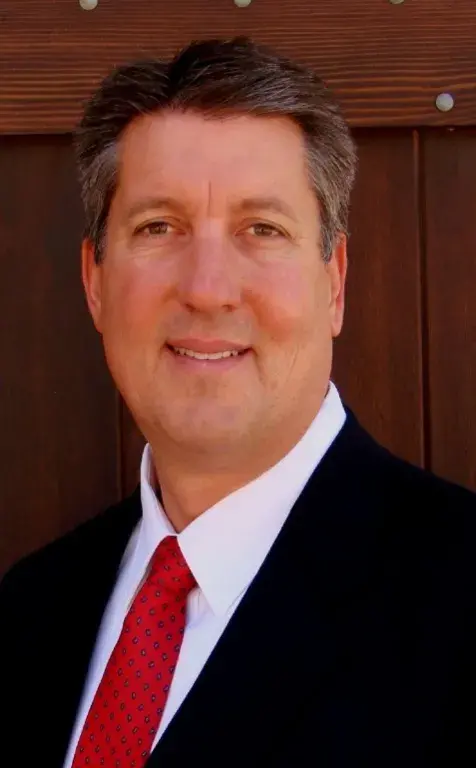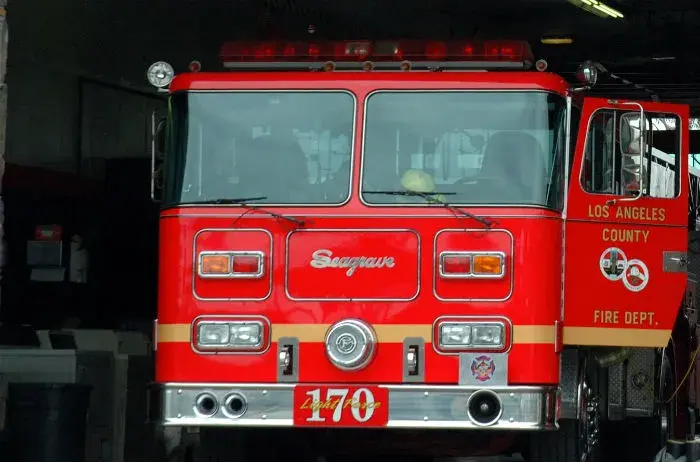The Department of Homeland Security (DHS) Science and Technology Directorate’s (S&T) First Responders Group (FRG) relies on experienced emergency response and preparedness professionals to guide its research and development efforts. The First Responder Resource Group (FRRG) fills that role. An all-volunteer working group, the FRRG helps S&T maintain focus on the top-priority needs of responders in the field. This new series will highlight FRRG members, offering a glimpse into their daily responsibilities, as well as their ongoing support of S&T technology development.
 Meet Battalion Chief Andrew Wordin of the Los Angeles Fire Department (LAFD). An FRRG member for five years, Wordin has advised FRG on the development of several technologies, most recently the EDGE Virtual Training project. We spoke with him about his background, the value he perceives of FRRG membership and a “typical” day serving in one of the largest fire departments in the nation.“Working for a large, urban fire department has its challenges,” Wordin said. “The LAFD provides services over a 465 square mile area to a population of more than four million residents.”
Meet Battalion Chief Andrew Wordin of the Los Angeles Fire Department (LAFD). An FRRG member for five years, Wordin has advised FRG on the development of several technologies, most recently the EDGE Virtual Training project. We spoke with him about his background, the value he perceives of FRRG membership and a “typical” day serving in one of the largest fire departments in the nation.“Working for a large, urban fire department has its challenges,” Wordin said. “The LAFD provides services over a 465 square mile area to a population of more than four million residents.”
With such a large jurisdiction, almost anything can happen.
“It is difficult to describe a typical day—the City of Los Angeles can have any number of emergency incidents on any given day – ranging from structure fires, earthquakes, wild land fires in the urban interface, hundreds of calls for emergency medical services and much more,” he added.
Wordin has a background in health education and knew in college that he wanted to work in the emergency services community.
“I was a lifeguard on the beaches of Southern California and knew I wanted to pursue emergency care or firefighting as a career. I also grew up in the age of the computer and have always wanted to work with technology.”
His college interests serve as the basis for his entire career.
“I am proud that I have had the opportunity to serve the Los Angeles community and to have had an impact on so many lives over my career,” expressed Wordin. Now, his field of expertise has grown to include providing and commanding pre-hospital care, fire suppression in urban and wild land environments, hazardous materials and urban search and rescue.
He also has extensive experience in training. “I have taught Emergency Medical Technician (EMT)-Basic, Advanced Cardiac Life Support, PreHospital Trauma Life Support, Paramedic Training, Emergency Medical Service (EMS) Operations and Plans for Weapons of Mass Destruction (WMD) utilizing a human patient simulator, Virtual Training focused on Operational Command and Control Simulations (All Risk), Exercise Design, and Introduction to WMD in the USAR environment.”
 Chief Wordin was nominated to join the FRRG by a fellow first responder, Chief Paul Maniscalco (retired) of the Fire Department of New York. “I joined the FRRG in August 2009. At that time, I was a part of an FRRG working group dedicated to specific technology needs for EMS providers. Our initial work was to develop better credentialing systems, patient tracking, ambulance design and virtual training. Our work brought a great group of people together from all types of jurisdictions to solve technology problems,” said Wordin.
Chief Wordin was nominated to join the FRRG by a fellow first responder, Chief Paul Maniscalco (retired) of the Fire Department of New York. “I joined the FRRG in August 2009. At that time, I was a part of an FRRG working group dedicated to specific technology needs for EMS providers. Our initial work was to develop better credentialing systems, patient tracking, ambulance design and virtual training. Our work brought a great group of people together from all types of jurisdictions to solve technology problems,” said Wordin.
His knowledge of virtual training, in particular, proved invaluable to S&T. He was critical to the development of FRG’s Enhanced Dynamic Geo-Social Environment (EDGE) Virtual Training platform, from working with fellow FRRG colleagues to identify the capability need, to supporting development of a master training scenario and traveling to Sacramento for the pilot rollout.
“Andy’s been a close consultant throughout the development of the tool,” said Milt Nenneman, one of FRG’s Virtual Training program managers.
“He’s someone I would frequently call, and he guided us to keep us on course. He played a very active role and put a lot of his personal time into this as well. Andy’s support and expertise were significant and instrumental to the development of the EDGE Virtual Training tool,” Nenneman added.
When asked his thoughts on the technology, Wordin said, “What a great collaboration between DHS S&T, the U.S. Army and local fire, EMS and police agencies. When we work together to plan and train, we are able to prepare for all types of incidents, which will keep the public safer. The Virtual Training project is just the beginning of bringing new technology to the first responder community all across the nation, allowing responders to be ready for the most catastrophic events in our communities.”
As for his contributions to developing the Virtual Training master scenario and supporting the pilot: “Working with the EDGE Team and the responders from Sacramento was a fantastic experience. We were able to go through the Sacramento Police Department’s training center to see the actual tactics they use. That is extremely important when building Virtual Training.”
“As a developer of simulations, you want the experience for the end user to be as close to real as possible—that realism will allow the participant to have a level of experience to draw from if an actual event takes place. That training and experience is vital for the safety and decision making of the firefighter, Paramedic, EMT or police officer. The development team for the Virtual Training tool was a diverse team that brought realism to the project.”
In June 2014, Wordin attended the FRRG Meeting in Washington, D.C., where Virtual Training and other current S&T projects were demonstrated. He and his colleagues provided FRG with input on their technology needs moving forward. He described his experience there, saying that “much like previous years’ meetings, this is always a great venue to discuss what is happening in the technology world and see what has developed over the past year. It is also a good venue to network with other emergency responders and emergency managers.”
He attended the Virtual Training demo and appreciated working with his team at the conference to “bring out new ideas on what good situational awareness means and the tools that are needed to accomplish that very difficult task for an incident commander.”
Wordin was enthusiastic about his work with the FRRG, and recommended it to his peers, saying “participation provides an opportunity to find new technology that will help better protect our communities and keep our personnel safer while we work in a dangerous environment.”
Membership benefits are twofold; in addition to giving his input to FRG via the FRRG, the FRRG has impacted his day-to-day job as well. “The FRRG has been influential in my job, allowing me the opportunity to work with other responders across the nation, collaborating and learning from others. Also, being able to learn about new technology that will keep our communities safer is a significant influence.”
Check back soon for additional FRRG member spotlights. For more information on how to become a member of the FRRG, contact first.responder@hq.dhs.gov.
